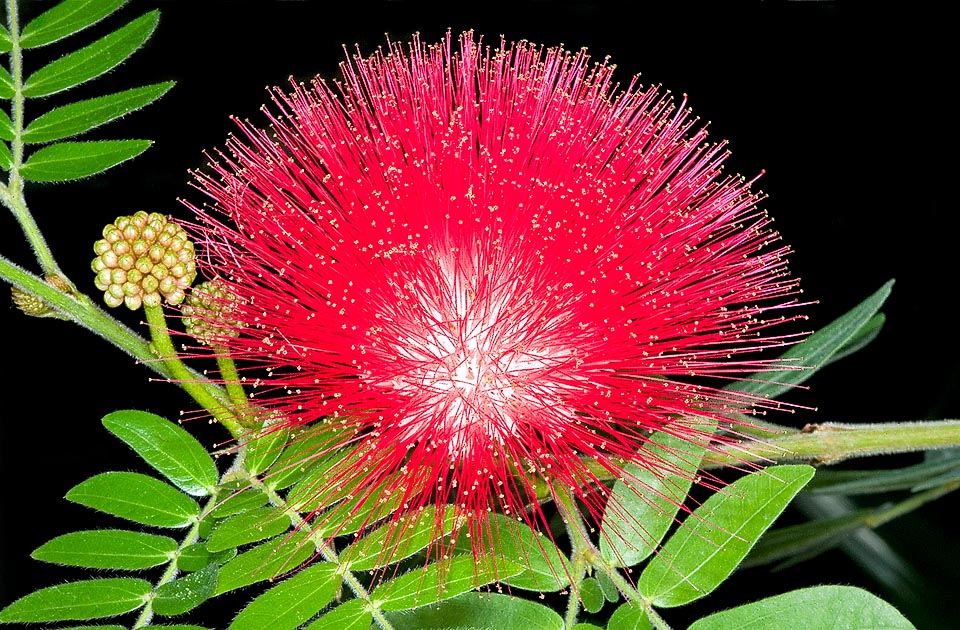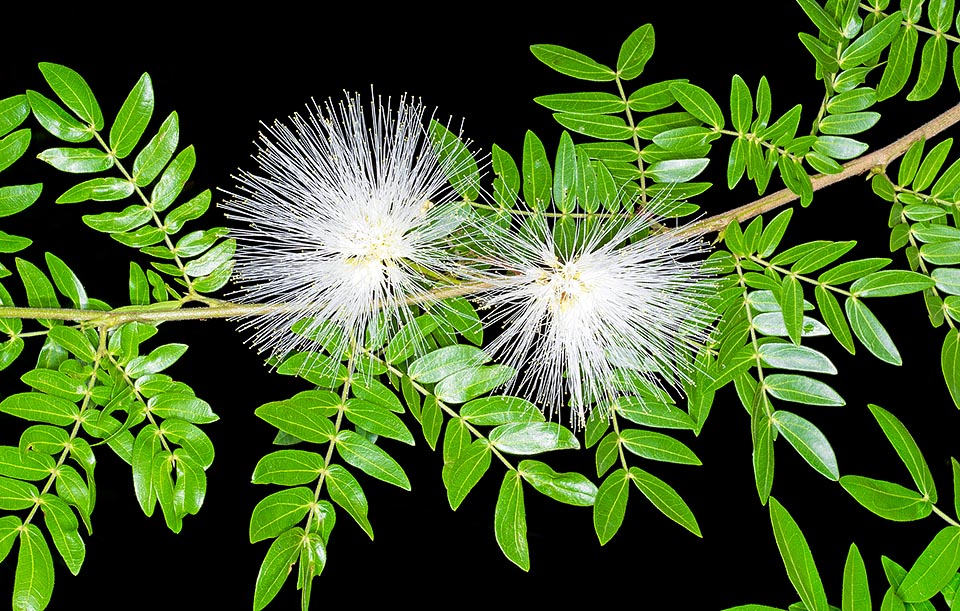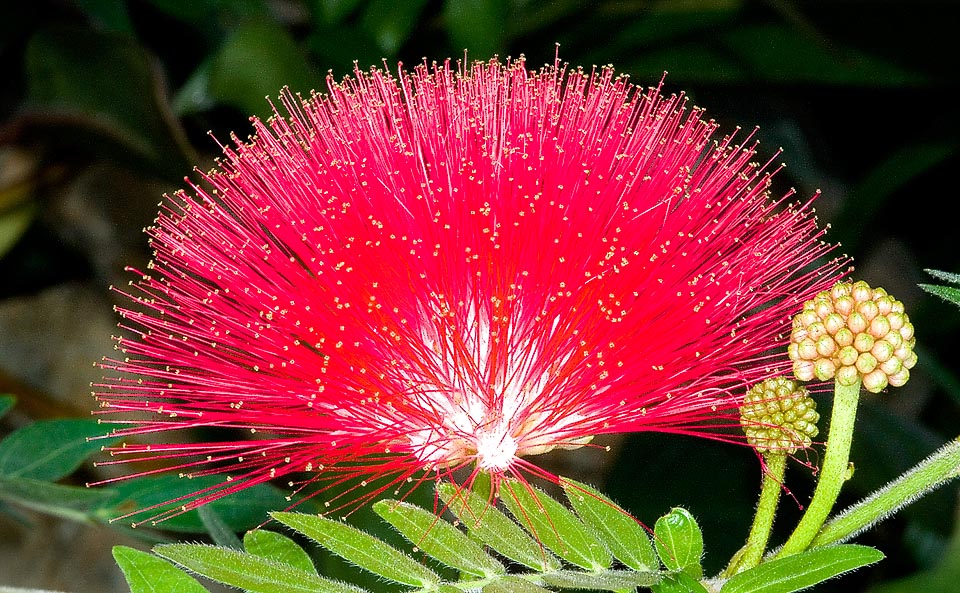Family : Fabaceae

Text © Pietro Puccio

English translation by Mario Beltramini

Calliandra heamatocephala is a very ramified evergreen of the Bolivian savannahs, that reaches, at low and medium altitudes, the height of 3-4 m © Giuseppe Mazza
The generic name is the combination of the Greek substantives “κάλλος” (kallos) = beauty and “ἀνήρ, ἀνδρός” (anér, andrós) = man, male, with reference to the showy stamina; the specific name is the combination of the Greek substantives “αἷμα, -τος” (haima, -tos) = blood and “κεφαλή” (cephalé) = head, due to the colour of the inflorescence.
Common names: powderpuff-tree, red powder-puff (English); arbre aux houpettes (French); bellota (Spanish).
The Calliandra haematocephala Hassk. (1855) is a shrub or small evergreen tree very ramified, 3-4 m tall, with wrinkled brown bark and long, thin and arcuate young branches.
The leaves, on a 1,5-3 cm long petiole, are alternate, bipinnate, formed by two paripinnate leaves, 10-22 cm long, with 5-8 pairs of subsessile leaflets lanceolate obliquely with sparse and short down at the margins, 2-7 cm long and 1,5-3 cm broad, of increasing length towards the apex, of intense green colour; the young leaves are copper-coloured.

The pyrotechnical inflorescences are normally scarlet, but seen the huge horticultural interest even a variety 'Alba' has been selected © Giuseppe Mazza
The fruit is a linear legume, 6-14 cm long, dehiscent in explosive way, initially green, then brown when ripe, containing up to 5 oblong, flat seeds, about 8 mm long and 4 mm broad.
It reproduces by seed, previously scarified and kept in water for two days, in fertile draining loam maintained humid, but without stagnations, at the temperature of 24-26 °C, wit germination times of 1-4 weeks, and by semi-woody cutting in summer or tip-cutting in spring.
Species with decorative foliage and showy blooming that continues over almost the whole year, with a peak from autumn to spring, relatively fast growing, can be cultivated as isolated specimen or for espaliers in the parks and gardens, even if of modest size, of the tropical, subtropical and marginally warm temperate climate zones, where temperatures of a few degrees under the 0 °C are short lasting exceptions.

Born for the tropics, sporadically resists to 0 °C in the warm temperate climates and adapts to life in pot, also as bonsai. Proved medicinal virtues © Giuseppe Mazza
Cultivable also in pot in draining organic loam, in particular the variety ‘Nana’, for the decoration of open spaces, greenhouses or luminous verandahs, or to be sheltered during the coldest months in a protected ambient where the climate does not allow the continuity in open air, with lowest temperature values preferably not under the 15 °C. Finally, it is an excellent subject for bonsai.
Laboratory studies have shown in the extracts of the plant the presence of bioactive compounds with gastroprotective and antiulcerogenic effects of possible interest in the official pharmacopoeia.
Synonyms: Feuilleea haematocephala (Hassk.) Kuntze (1891); Calliandra inaequilatera Rusby (1896); Calliandra novaesii Hoehne (1918); Anneslia haematocephala (Hassk.) Britton & P. Wilson (1926).
→ To appreciate the biodiversity within the family of FABACEAE please click here.
